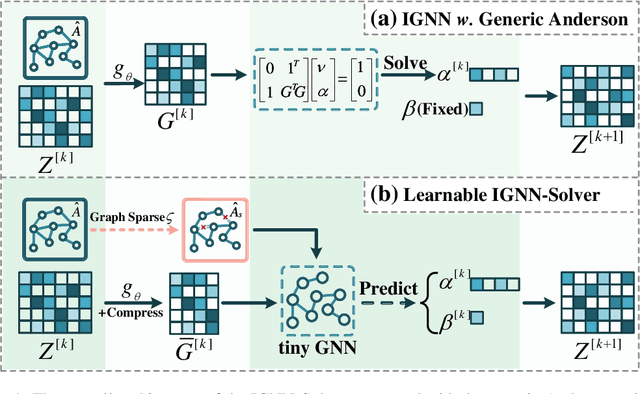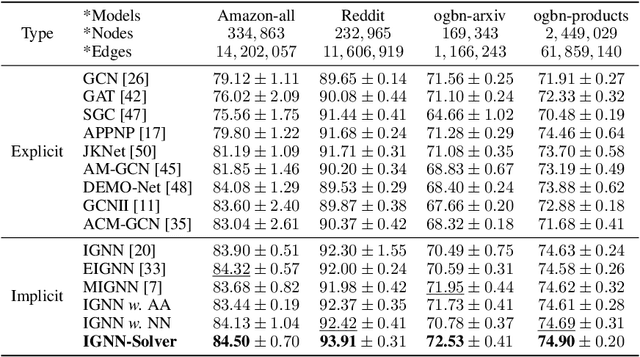Jingwen Xu
Enhancing Model Privacy in Federated Learning with Random Masking and Quantization
Aug 27, 2025Abstract:The primary goal of traditional federated learning is to protect data privacy by enabling distributed edge devices to collaboratively train a shared global model while keeping raw data decentralized at local clients. The rise of large language models (LLMs) has introduced new challenges in distributed systems, as their substantial computational requirements and the need for specialized expertise raise critical concerns about protecting intellectual property (IP). This highlights the need for a federated learning approach that can safeguard both sensitive data and proprietary models. To tackle this challenge, we propose FedQSN, a federated learning approach that leverages random masking to obscure a subnetwork of model parameters and applies quantization to the remaining parameters. Consequently, the server transmits only a privacy-preserving proxy of the global model to clients during each communication round, thus enhancing the model's confidentiality. Experimental results across various models and tasks demonstrate that our approach not only maintains strong model performance in federated learning settings but also achieves enhanced protection of model parameters compared to baseline methods.
RECAST: Strengthening LLMs' Complex Instruction Following with Constraint-Verifiable Data
May 25, 2025Abstract:Large language models (LLMs) are increasingly expected to tackle complex tasks, driven by their expanding applications and users' growing proficiency in crafting sophisticated prompts. However, as the number of explicitly stated requirements increases (particularly more than 10 constraints), LLMs often struggle to accurately follow such complex instructions. To address this challenge, we propose RECAST, a novel framework for synthesizing datasets where each example incorporates far more constraints than those in existing benchmarks. These constraints are extracted from real-world prompt-response pairs to ensure practical relevance. RECAST enables automatic verification of constraint satisfaction via rule-based validators for quantitative constraints and LLM-based validators for qualitative ones. Using this framework, we construct RECAST-30K, a large-scale, high-quality dataset comprising 30k instances spanning 15 constraint types. Experimental results demonstrate that models fine-tuned on RECAST-30K show substantial improvements in following complex instructions. Moreover, the verifiability provided by RECAST enables the design of reward functions for reinforcement learning, which further boosts model performance on complex and challenging tasks.
Improving RL Exploration for LLM Reasoning through Retrospective Replay
Apr 19, 2025Abstract:Reinforcement learning (RL) has increasingly become a pivotal technique in the post-training of large language models (LLMs). The effective exploration of the output space is essential for the success of RL. We observe that for complex problems, during the early stages of training, the model exhibits strong exploratory capabilities and can identify promising solution ideas. However, its limited capability at this stage prevents it from successfully solving these problems. The early suppression of these potentially valuable solution ideas by the policy gradient hinders the model's ability to revisit and re-explore these ideas later. Consequently, although the LLM's capabilities improve in the later stages of training, it still struggles to effectively address these complex problems. To address this exploration issue, we propose a novel algorithm named Retrospective Replay-based Reinforcement Learning (RRL), which introduces a dynamic replay mechanism throughout the training process. RRL enables the model to revisit promising states identified in the early stages, thereby improving its efficiency and effectiveness in exploration. To evaluate the effectiveness of RRL, we conduct extensive experiments on complex reasoning tasks, including mathematical reasoning and code generation, and general dialogue tasks. The results indicate that RRL maintains high exploration efficiency throughout the training period, significantly enhancing the effectiveness of RL in optimizing LLMs for complicated reasoning tasks. Moreover, it also improves the performance of RLHF, making the model both safer and more helpful.
Dendritic Localized Learning: Toward Biologically Plausible Algorithm
Jan 17, 2025Abstract:Backpropagation is the foundational algorithm for training neural networks and a key driver of deep learning's success. However, its biological plausibility has been challenged due to three primary limitations: weight symmetry, reliance on global error signals, and the dual-phase nature of training, as highlighted by the existing literature. Although various alternative learning approaches have been proposed to address these issues, most either fail to satisfy all three criteria simultaneously or yield suboptimal results. Inspired by the dynamics and plasticity of pyramidal neurons, we propose Dendritic Localized Learning (DLL), a novel learning algorithm designed to overcome these challenges. Extensive empirical experiments demonstrate that DLL satisfies all three criteria of biological plausibility while achieving state-of-the-art performance among algorithms that meet these requirements. Furthermore, DLL exhibits strong generalization across a range of architectures, including MLPs, CNNs, and RNNs. These results, benchmarked against existing biologically plausible learning algorithms, offer valuable empirical insights for future research. We hope this study can inspire the development of new biologically plausible algorithms for training multilayer networks and advancing progress in both neuroscience and machine learning.
GESH-Net: Graph-Enhanced Spherical Harmonic Convolutional Networks for Cortical Surface Registration
Oct 18, 2024Abstract:Currently, cortical surface registration techniques based on classical methods have been well developed. However, a key issue with classical methods is that for each pair of images to be registered, it is necessary to search for the optimal transformation in the deformation space according to a specific optimization algorithm until the similarity measure function converges, which cannot meet the requirements of real-time and high-precision in medical image registration. Researching cortical surface registration based on deep learning models has become a new direction. But so far, there are still only a few studies on cortical surface image registration based on deep learning. Moreover, although deep learning methods theoretically have stronger representation capabilities, surpassing the most advanced classical methods in registration accuracy and distortion control remains a challenge. Therefore, to address this challenge, this paper constructs a deep learning model to study the technology of cortical surface image registration. The specific work is as follows: (1) An unsupervised cortical surface registration network based on a multi-scale cascaded structure is designed, and a convolution method based on spherical harmonic transformation is introduced to register cortical surface data. This solves the problem of scale-inflexibility of spherical feature transformation and optimizes the multi-scale registration process. (2)By integrating the attention mechanism, a graph-enhenced module is introduced into the registration network, using the graph attention module to help the network learn global features of cortical surface data, enhancing the learning ability of the network. The results show that the graph attention module effectively enhances the network's ability to extract global features, and its registration results have significant advantages over other methods.
IGNN-Solver: A Graph Neural Solver for Implicit Graph Neural Networks
Oct 11, 2024



Abstract:Implicit graph neural networks (IGNNs), which exhibit strong expressive power with a single layer, have recently demonstrated remarkable performance in capturing long-range dependencies (LRD) in underlying graphs while effectively mitigating the over-smoothing problem. However, IGNNs rely on computationally expensive fixed-point iterations, which lead to significant speed and scalability limitations, hindering their application to large-scale graphs. To achieve fast fixed-point solving for IGNNs, we propose a novel graph neural solver, IGNN-Solver, which leverages the generalized Anderson Acceleration method, parameterized by a small GNN, and learns iterative updates as a graph-dependent temporal process. Extensive experiments demonstrate that the IGNN-Solver significantly accelerates inference, achieving a $1.5\times$ to $8\times$ speedup without sacrificing accuracy. Moreover, this advantage becomes increasingly pronounced as the graph scale grows, facilitating its large-scale deployment in real-world applications.
AIM 2024 Challenge on Video Super-Resolution Quality Assessment: Methods and Results
Oct 05, 2024



Abstract:This paper presents the Video Super-Resolution (SR) Quality Assessment (QA) Challenge that was part of the Advances in Image Manipulation (AIM) workshop, held in conjunction with ECCV 2024. The task of this challenge was to develop an objective QA method for videos upscaled 2x and 4x by modern image- and video-SR algorithms. QA methods were evaluated by comparing their output with aggregate subjective scores collected from >150,000 pairwise votes obtained through crowd-sourced comparisons across 52 SR methods and 1124 upscaled videos. The goal was to advance the state-of-the-art in SR QA, which had proven to be a challenging problem with limited applicability of traditional QA methods. The challenge had 29 registered participants, and 5 teams had submitted their final results, all outperforming the current state-of-the-art. All data, including the private test subset, has been made publicly available on the challenge homepage at https://challenges.videoprocessing.ai/challenges/super-resolution-metrics-challenge.html
Semantic Graph Neural Network with Multi-measure Learning for Semi-supervised Classification
Dec 04, 2022



Abstract:Graph Neural Networks (GNNs) have attracted increasing attention in recent years and have achieved excellent performance in semi-supervised node classification tasks. The success of most GNNs relies on one fundamental assumption, i.e., the original graph structure data is available. However, recent studies have shown that GNNs are vulnerable to the complex underlying structure of the graph, making it necessary to learn comprehensive and robust graph structures for downstream tasks, rather than relying only on the raw graph structure. In light of this, we seek to learn optimal graph structures for downstream tasks and propose a novel framework for semi-supervised classification. Specifically, based on the structural context information of graph and node representations, we encode the complex interactions in semantics and generate semantic graphs to preserve the global structure. Moreover, we develop a novel multi-measure attention layer to optimize the similarity rather than prescribing it a priori, so that the similarity can be adaptively evaluated by integrating measures. These graphs are fused and optimized together with GNN towards semi-supervised classification objective. Extensive experiments and ablation studies on six real-world datasets clearly demonstrate the effectiveness of our proposed model and the contribution of each component.
 Add to Chrome
Add to Chrome Add to Firefox
Add to Firefox Add to Edge
Add to Edge